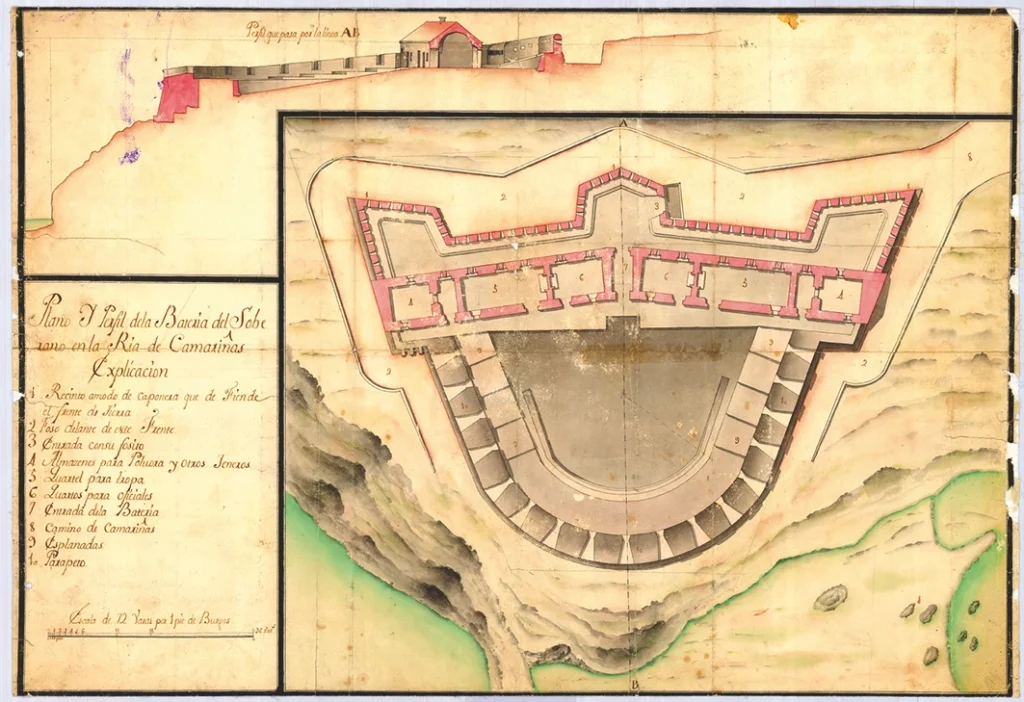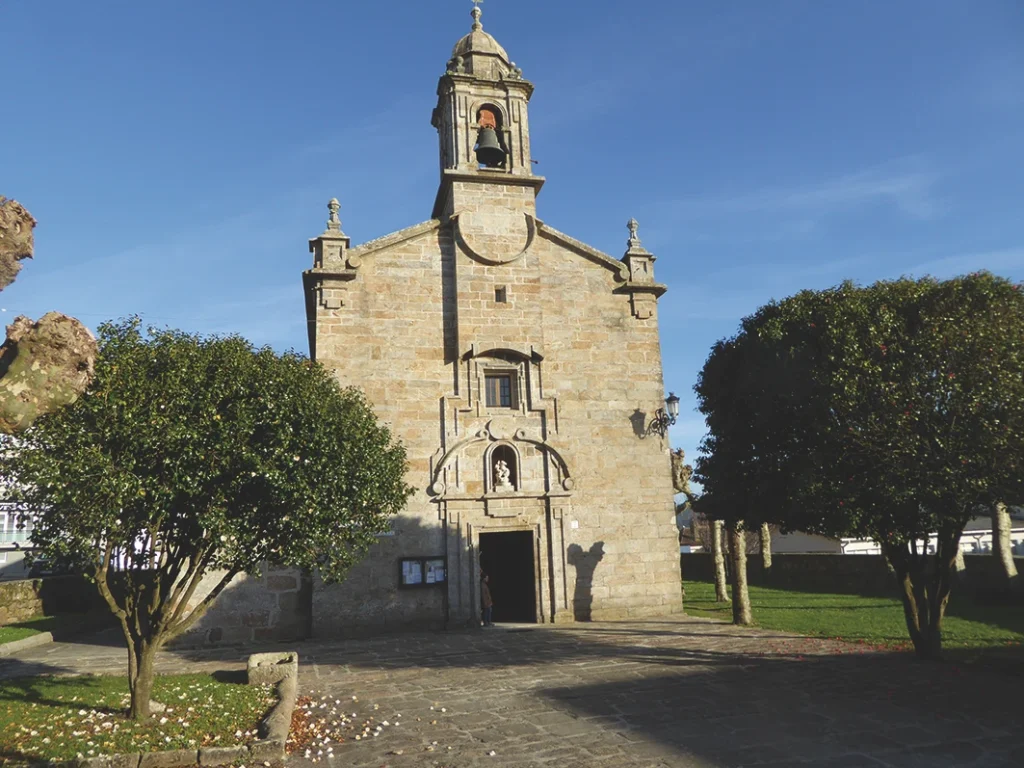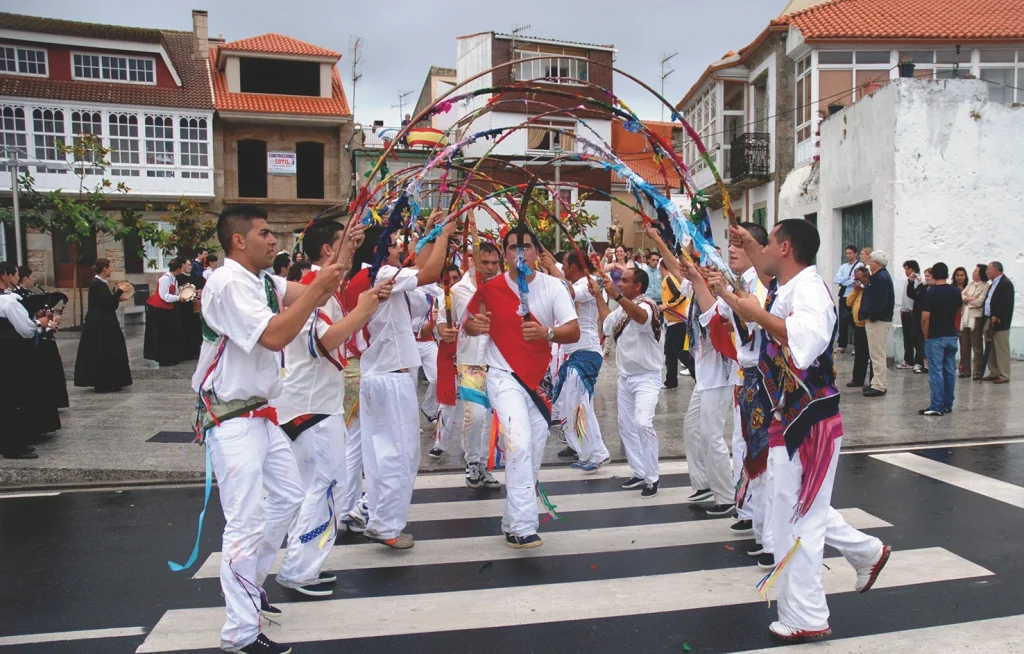History
Camariñas, whose name comes from the local name for crowberry (Corema album), a shrub that grows on the dunes near the the town, was established later than the ancient hamlets in the parish of San Xurxo de Buria. The monks of the small monastery of Tosto, in Santa Mariña, helped to Christianise the region, although the community belonged to the diocese of Mondoñedo in the 10th c.
The first inhabitants began to settle here in the 13th century, making use of the good conditions offered by the beach of O Curbeiro as a natural harbour for fishing and maritime trade, and thus the town of Camariñas was born.
In the 15th c., the port came under the control the Moscoso de Altamira family, who governed the region from the castle of Vimianzo.
In the 16th c., Juan Molina, a local writer, commented on the importance of the town. In the first half of the 18th c., the Compendio del Estado de Altamira (1724) (a description of the regional estate) stated that Camariñas had a population of 140 residents (about 600 inhabitants), who worked in fishing. The port was well known and vessels from other countries that sailed along this coast would dock there. The Catastro de Ensenada (1753) (a local census) mentions two galleons that were used for fishing sardines, several pataches (boats) that transported salted sardines to the Basque Country and other small vessels that fished for conger.
Frequent attacks from pirates led to the construction of defensive fortifications, the most important being the castle of O Soberano, built in the mid 18th c., of which only the foundations remain.
In the early 20th c., Camariñas was a bustling fishing town, with well built whitewashed houses that made it look like an Andalusian village, and narrow streets that opened out onto the port itself. Commerce was another important activity in the town. Cereals and timber were exported from the port, and manufactured goods and some food products were imported.
The appearance of the town started to change radically in the 1960s with the construction of new buildings that had little to do with the traditional houses and did not respect urban regulations.
Camariñas is now a town of about 2,500 inhabitants with a modern centre built on top of the previous one. It has also extended out into the surrounding countryside. The residents work in fishing, canning, lace work and the service sector.

Si el núcleo urbano camariñano perdió mucho de su encanto tradicional, la belleza incomparable de su Although the centre of the town has lost much of its previous charm, the beautiful coastline, lace work and the spectacular Vilán lighthouse have made Camariñas a very attractive option for tourists.
Route on foot around the town of Camariñas
An opportunity not be missed when you come to Camariñas is the lace work museum, which has a lot of information about the history and current state of this craft. Then take a walk by the sea, where you’ll see some of the buildings that used to be the old sea front: lace work shops, terraces of bars and restaurants with sea views, and closer to the port the views include fishing boats and leisure craft that fill the harbour with colour.
If you go to Punta do Boi or Punta do Castelo, you’ll come upon the ruins of the castle of O Soberano. The castle consisted of a curved part facing the sea that was adapted to the contours of the coast, and another polygonal face that looked out over the land. The design is typical of the military architecture of the period, and is made up of triangular bastions on the corners and a bastion with four sides in the centre, joined by two straight walls, where the entrances are.
There was a set of buildings in a straight line that acted as a second defensive wall, used to guard gunpowder and munitions, along with quarters for the officers and troops. A central walkway gave access to the mountings for the artillery, where a curved battery for 17 guns was placed.

Only the foundations remain of the fortress, which never saw a war: the stones were used in the 1940s to build the port.
In the town centre and some distance from the sea is the parish church of San Xurxo, built in the Baroque style and worth visiting for its architecture and because of the interesting altarpieces inside the church.
It was built between 1788 and 1797, thanks to a financial donation from a benefactor, Antonio Domingo Rodríguez Canosa, a local from A Casa do Rego da Horta, in O Cotro, who had emigrated to Mexico. The ground plan is shaped like a Latin cross, with just one nave, covered with a groin vault and gabled roof. The sacristy is at the back of the building.
The façade is built with well cut granite masonry and is more visually dynamic than the rest of the building, where there is hardly any decoration. The bell tower and door, with Baroque decoration, are two notable features.
The interior contains several very interesting altarpieces. The largest, completed in the Neoclassical style, may be a work by the well-known sculptor José Ferreiro, and is presided over by the Virxe do Monte (Virgin of the Mount) and San Xurxo (Saint Geoge). Two other altarpieces on the left hand side of the church have also been attributed to Ferreiro: those of Jesus tied to the column and the Nazarene. The Baroque altarpiece of the Dolorosa (Our Lady of Sorrows) is on the right-hand side.
The narrow streets inside the town contain the mid-19th c. chapel of the Virxe do Carme, which has an interesting Baroque altarpiece dedicated to the Virgin of Carmel, patron saint of sailors. The fiestas in her honour are held every 16 July in the town. The streets also contain the Casa dos Altos or dos Romero, an urban pazo or manor house that belonged to this noble family. It has a large coat of arms on the façade with a symbology similar to that of the pazo of Loroxo (Cerqueda, Malpica), which belonged to the same family.

After visiting the town of Camariñas, head off to the cape Vilán and its lighthouse, about 5 km away. The road has beautiful views of the coast of Muxía